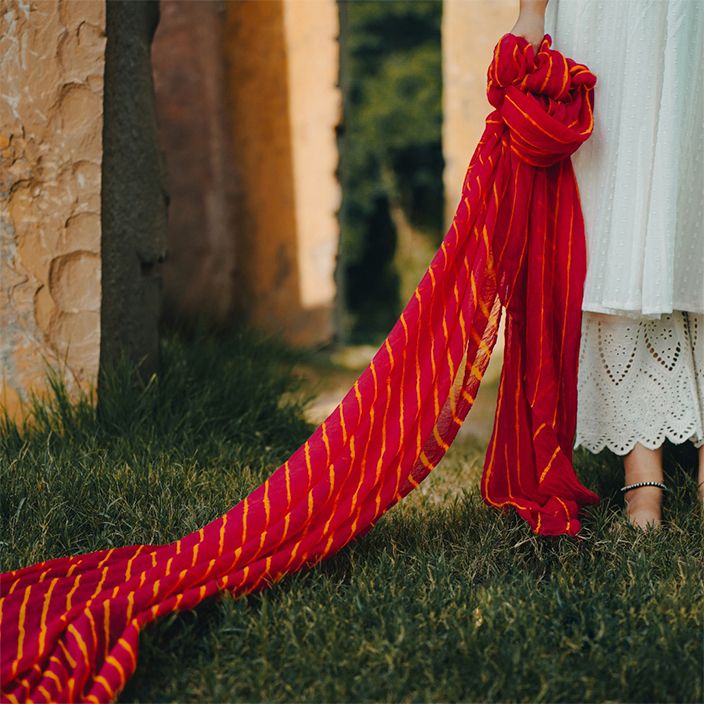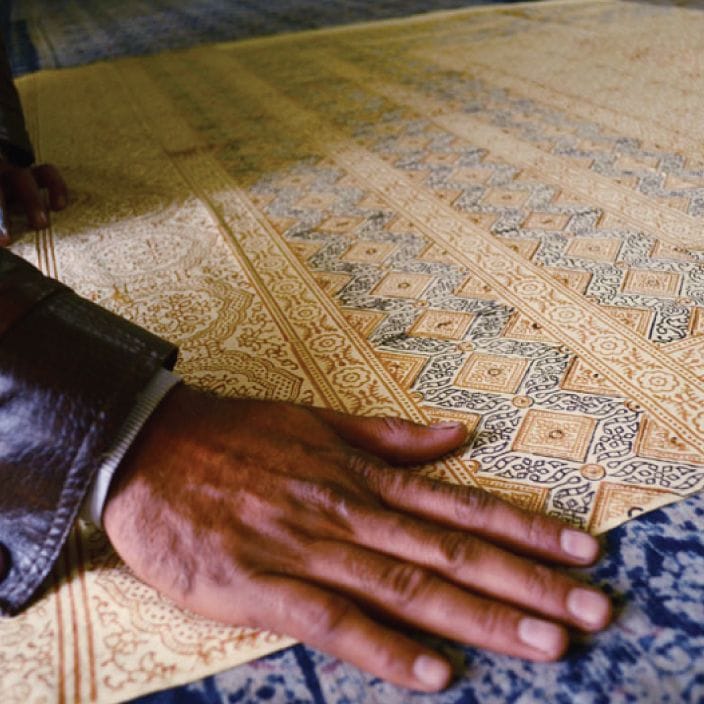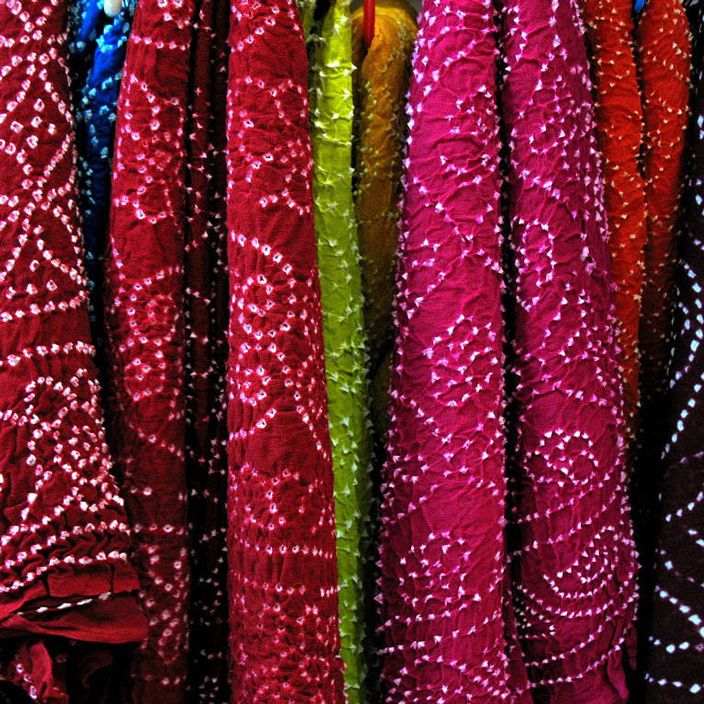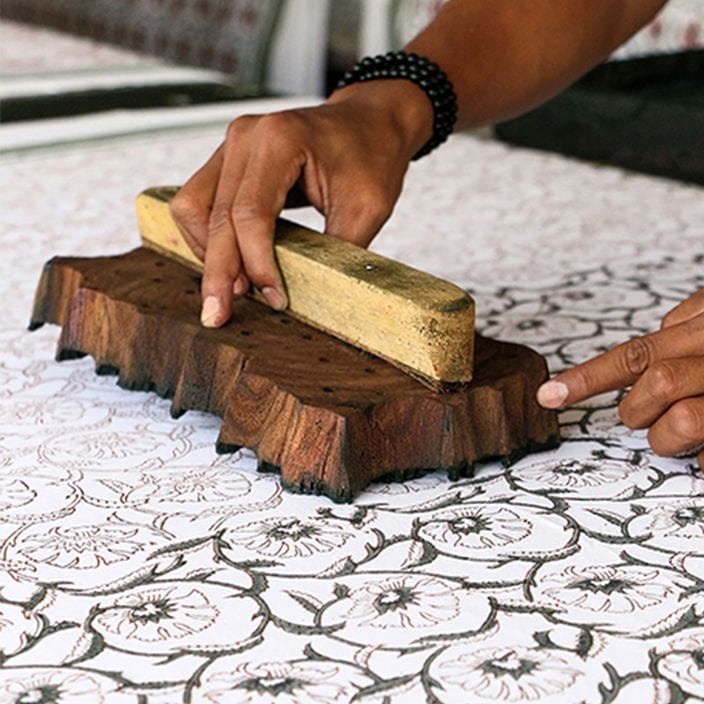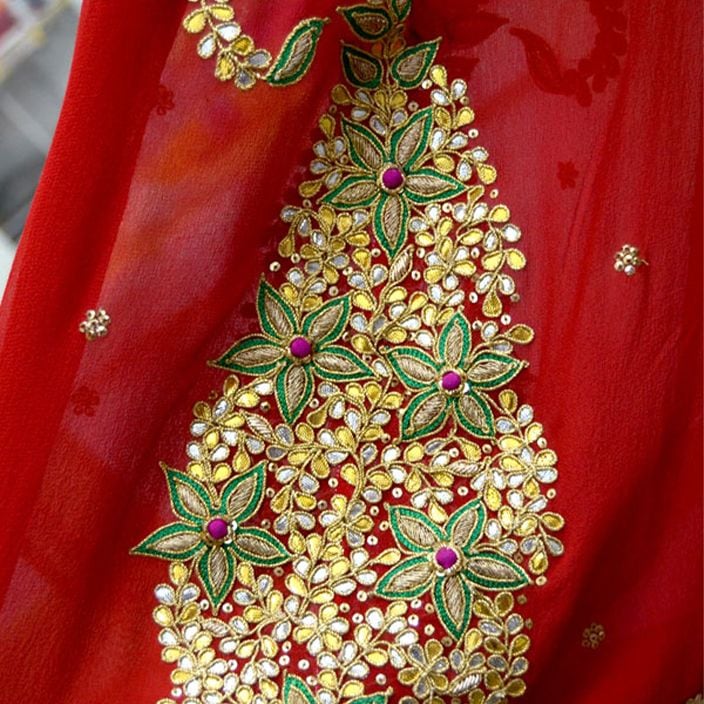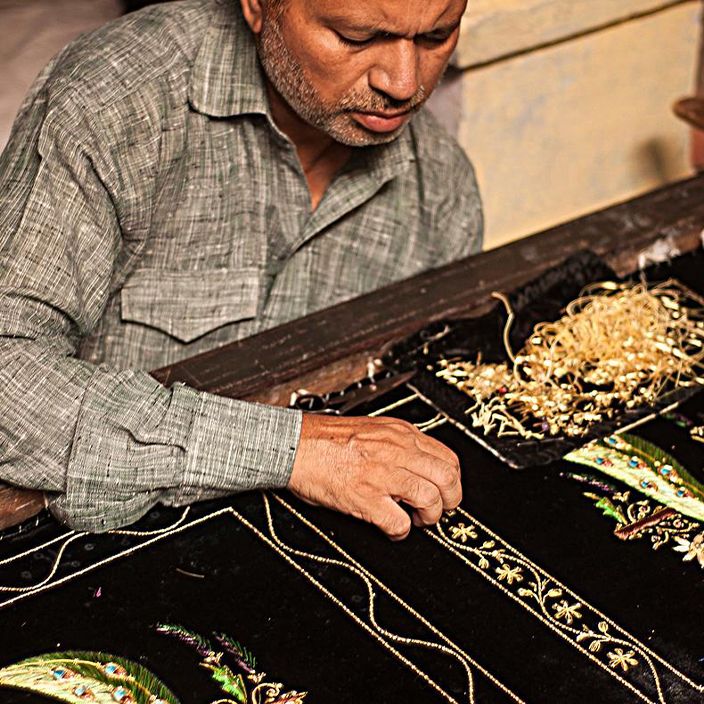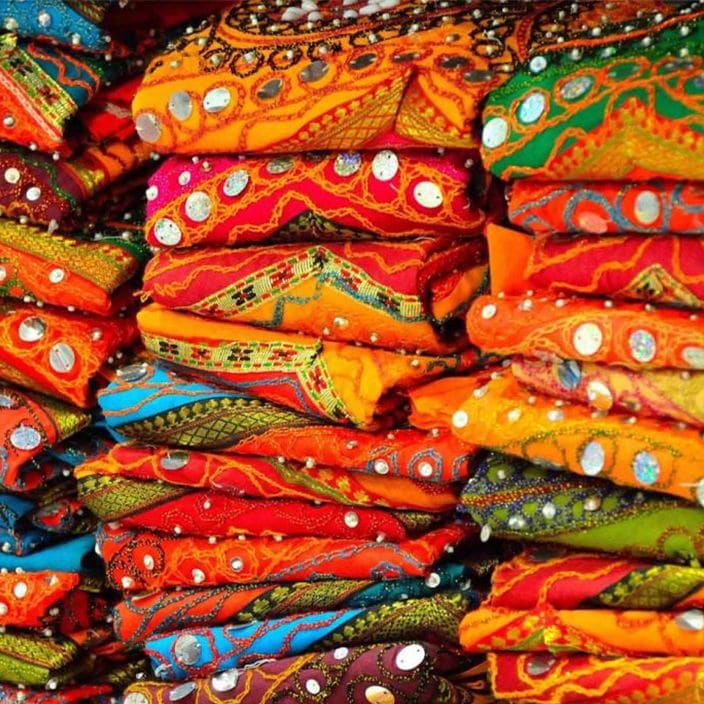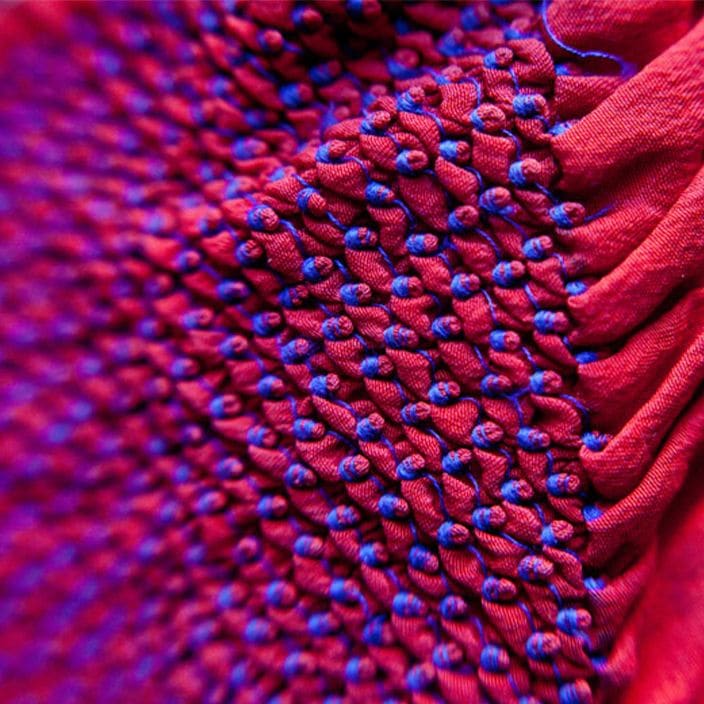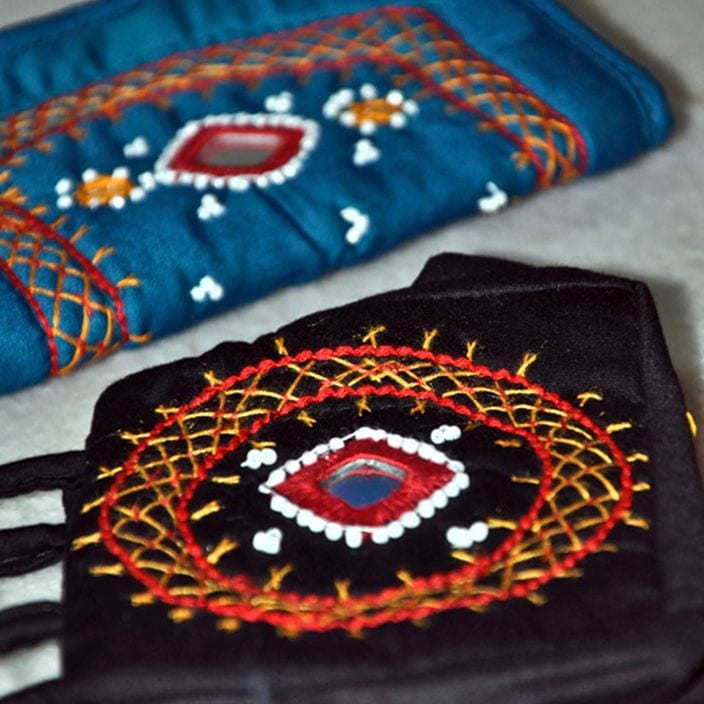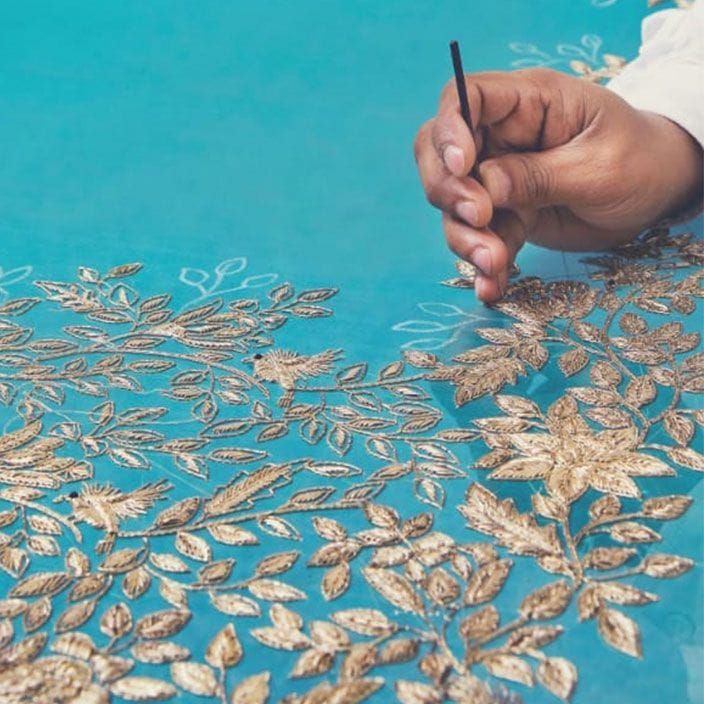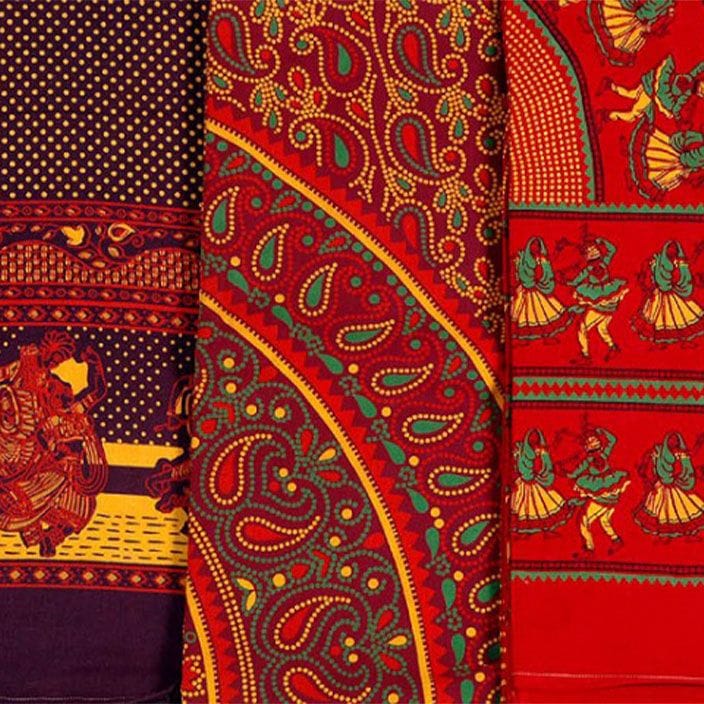For best prices and early deliveries, WhatsApp us at. 918488070070
Rajasthan
Bathed in grandeur and old-world charm, the state of Rajasthan, along with its people, is known to be extremely hospitable and is famous for its unbeatable codes of chivalry. Every Indian state identifies with a distinct culture and deep-rooted traditions, among which Rajasthan has a reputation for having the most vibrant &.rich legacy. Formerly known as Rajputana, which means the country of the Rajputs, its majestic forts stand tall to date and never fail to amaze people around the world. Traditional clothes of Rajasthan and Gujarat are a result of its craft practices which majorly comprise various block printing techniques and patterns, tie & dye or Bandhej, and traditional embroideries. The radiant nature of the state is brought to the forefront through heavily embroidered and colourful, traditional dress of women and men.
Traditional Rajasthani Clothing
Women
The traditional Rajasthani attire of women has always been a choli and an ankle-length lehenga, also widely known as chaniya choli. A dupatta, which is known as the odhni or chunar is draped around the head, and is both cultural & functional, acting as protection from the scorching sun. As a symbol of modesty, women from a lot of Rajasthani communities are also required to drape the odhni over their face in order to cover it. The cholis and skirts typically feature a lot of mirror work, which is another widely and expertly practised craft of the state, as well as Jaipuri gota work. Beads, shells, creative cutwork also come into play. Bright hues like blue, yellow, orange and green can be seen across most Rajasthani culture dresses of women.
Men
For men, the traditional Rajasthani Outfit for men is a dhoti and an angrakha kurta, which is majorly white, leheriya or bandhani. The dhoti is essentially a piece of cloth tied around the waist, and wrapped like a loin-cloth between both legs. An Angrakha kurta has an inner panel on the chest, and is usually worn by the elite or the higher classes. One can also see people from a few tribes or remote communities donning the angrakha, but the length can vary. It can be short, long or knee-length, depending upon personal preference, occasion and cultural significance.
Men also wear pyjama kurta made of cotton fabric. The kurta is loose-fitting, and the pyjama too is quite airy, providing relief from the hot weather conditions. Once again, the length of the kurta may vary, although the traditional rendition reaches the knees.
Staple Jewellery & Accessories
When it comes to jewellery, one can see elaborate necklaces like Jadau sets, chokers and Rani Haars worn by women from affluent family backgrounds.
A turban or ‘pagri’ is another important element of the traditional Rajasthani ethnic wear for men. It is a headgear made out of 2-metre long cloth, and is the pride and honour of the state’s male community.
It is worn in a number of ways, and each one represents a region, caste, occasion or social standing. Safas are types of pagaris that are specially designed, are short & broad and worn for weddings or other festivities.
